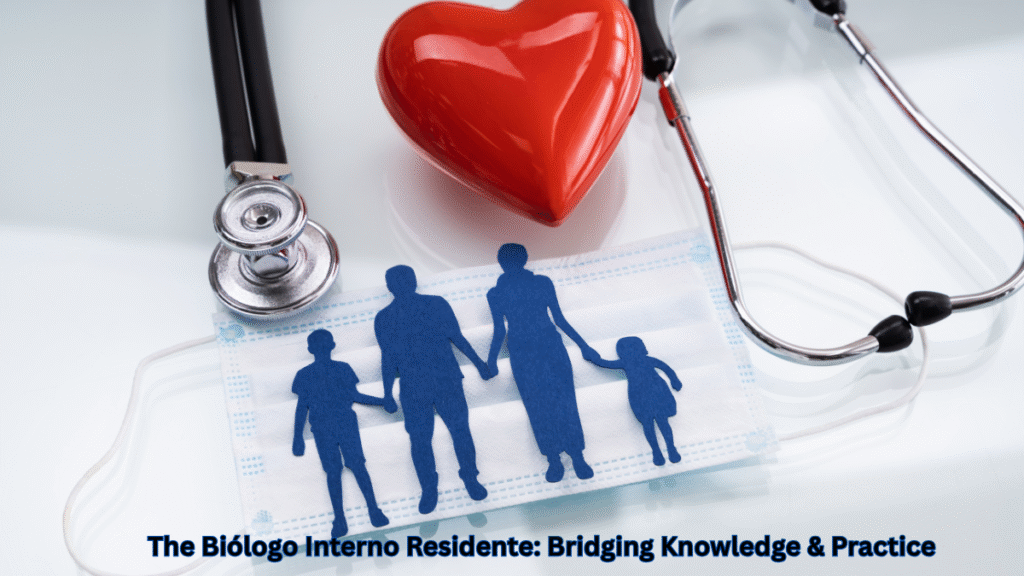When people encounter the term “biólogo interno residente”, the first question is often straightforward: what does it actually mean? In simple terms, it refers to a biologist who is completing an advanced residency program, combining intensive practice with specialized training in laboratories, hospitals, research institutes, or environmental organizations. This role is designed to ensure that graduates of biology, who already possess strong theoretical foundations, develop the applied skills required to operate in real-world scenarios. The biólogo interno residente functions as a bridge between academic knowledge and professional practice, preparing specialists capable of addressing the urgent biological, environmental, and biomedical challenges of our time.
Origins and Definition
The concept of a resident biologist was inspired by medical residency programs. Just as physicians refine their skills in hospitals, biology graduates enter residency to refine their expertise in highly practical contexts. This adaptation arose from a growing need: traditional academic training, while rigorous, often lacks the hands-on immersion necessary for solving complex, real-life biological problems.
Thus, the biólogo interno residente is not a mere observer. Instead, they are an active participant in scientific processes, contributing to applied research, diagnosis, conservation, and innovation. Their presence responds to modern demands for professionals who are not only academically trained but also operationally capable.
Primary Functions of a Biólogo Interno Residente
While responsibilities differ across institutions, there are core duties that define the role:
- Applied Research: Conducting experiments in biotechnology, genetics, or ecology with practical implications.
- Clinical Diagnostics: Assisting in laboratories linked to hospitals, identifying pathogens, or analyzing genetic mutations.
- Environmental Monitoring: Participating in biodiversity conservation, resource management, and ecological assessments.
- Teaching Support: Assisting professors and mentoring undergraduate students during their training.
- Scientific Communication: Publishing articles and presenting results at conferences.
Table: Comparison Between a Graduate Biologist and a Biólogo Interno Residente
| Aspect | Graduate Biologist | Biólogo Interno Residente |
|---|---|---|
| Practical Experience | Limited to university internships | Intensive, supervised, real-world training |
| Responsibility | Supportive role | Active role in applied projects |
| Autonomy | Minimal | Moderate, under supervision |
| Focus | Primarily theoretical | Integrated practice and theory |
| Career Projection | Entry-level positions | Greater opportunities in research and applied science |
A Transitional Stage in Professional Life
For many, residency represents the most intense phase of training. The biólogo interno residente faces real-world cases: tracing the origins of a rare genetic condition, designing protocols for environmental restoration, or even collaborating on vaccine development. These tasks demand creativity, resilience, and critical thinking.
This stage is more than professional training; it is transformative. Residents refine their judgment, develop resilience to pressure, and begin to shape their scientific identities.
Challenges Facing the Resident Biologist
Every residency comes with obstacles. Among the most frequent challenges are:
- Workload: Residents often juggle demanding projects with long hours.
- Recognition: Compared to medical residencies, the role is less widely known, affecting social prestige.
- Resources: Not all institutions provide cutting-edge facilities, limiting the scope of practice.
- Job Market Competition: With many graduates entering biology, residents must differentiate themselves.
Table: Challenges and Opportunities for Biólogo Interno Residente
| Challenges | Opportunities |
|---|---|
| Limited recognition compared to medical residencies | Chance to pioneer a growing professional role |
| Resource constraints in some labs | Innovation through creative problem-solving |
| Long, demanding schedules | Building resilience and professional maturity |
| High competition for positions | Specialization that provides unique advantages |
Areas of Specialization
Residency programs allow professionals to focus on domains where they can develop niche expertise. Among the most prominent fields are:
- Molecular Biology and Genetics: Exploring DNA sequencing, mutation analysis, and gene therapies.
- Ecology and Conservation: Managing ecosystems, restoring damaged environments, and protecting endangered species.
- Clinical Microbiology: Diagnosing infections, analyzing antibiotic resistance, and developing diagnostic tools.
- Biotechnology: Creating bioproducts, pharmaceuticals, sustainable fuels, and agricultural innovations.
- Public Health Biology: Studying zoonotic diseases, epidemiology, and prevention strategies.
The Societal Impact
The work of a biólogo interno residente is quiet but indispensable. Hospitals rely on their expertise for diagnostic accuracy. Environmental agencies benefit from their monitoring and conservation strategies. Industries adopt their biotechnological solutions to address global challenges.
Their impact extends beyond technical contributions. Residency fosters ethical awareness and critical thinking, influencing decisions that touch public health, biodiversity conservation, and sustainable development.
International Context
While the role is still evolving, residency programs for biologists are gaining traction in Latin America and Europe. Universities and research centers are increasingly adopting this model to better prepare professionals for specialized roles. The trend suggests that, in the near future, residency could become a standard step for biologists aiming at leadership positions in academia, healthcare, or industry.
Looking Toward the Future
The future of the biólogo interno residente is shaped by three main forces:
- Digitalization: The integration of artificial intelligence into genetic and ecological analysis.
- Interdisciplinarity: Collaboration with professionals from medicine, engineering, and computer science.
- Sustainability: Involvement in global projects addressing climate change and food security.
Table: Future Trends for the Biólogo Interno Residente
| Trend | Professional Implication |
|---|---|
| Artificial intelligence in biology | Precision in genomic and ecological analysis |
| Interdisciplinary collaboration | Hybrid research teams with diverse expertise |
| Climate change and sustainability | Growing demand for conservation projects |
| Expansion of biotechnology | Increased roles in pharma and agriculture |
Admission Requirement
To enter a residency program, candidates must typically:
- Complete a degree in biology or a related field.
- Pass entrance exams or selection interviews.
- Demonstrate research skills and critical thinking.
- Commit to a two- to four-year training period.
Throughout residency, they receive mentorship, participate in demanding projects, and gradually gain autonomy.
Beyond Training: Personal Growth
Residency is not merely a professional pathway; it is also a profound personal experience. Residents interact with patients, communities, and ecosystems, learning empathy alongside science. They become more than technicians; they become advocates for life itself, embodying the essence of biology in action.
FAQs
1. What distinguishes a biólogo interno residente from a medical resident?
A medical resident focuses on direct patient care, while a resident biologist specializes in applied science, diagnostics, and conservation.
2. Is residency mandatory for all biology graduates?
No, but it is increasingly valued, especially for those seeking advanced research or teaching positions.
3. How long does a biology residency last?
Most programs last between two and four years, depending on specialization and institutional requirements.
4. What career opportunities follow residency?
Graduates may pursue roles in hospitals, research centers, universities, government agencies, or the biotech industry.
5. What is the greatest benefit of becoming a resident biologist?
The intensive, practical training that bridges academic theory with real-world application, making professionals more competitive and impactful.
Conclusion
The biólogo interno residente represents a crucial step forward in biological sciences. Positioned at the intersection of theory and practice, this role equips professionals to face the 21st century’s most pressing challenges. From genetic research to ecological conservation, their work is redefining the possibilities of applied biology.
Residency transforms not only careers but also perspectives. It cultivates scientists who understand that biology is more than data—it is the science of life, requiring responsibility, empathy, and innovation. As the world demands more solutions from biology, the figure of the resident biologist will continue to rise, shaping a future that is sustainable, equitable, and profoundly human.







